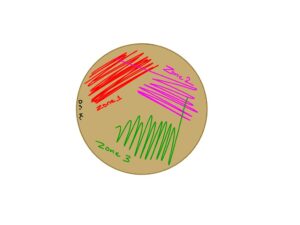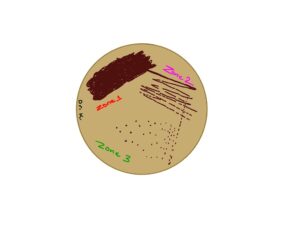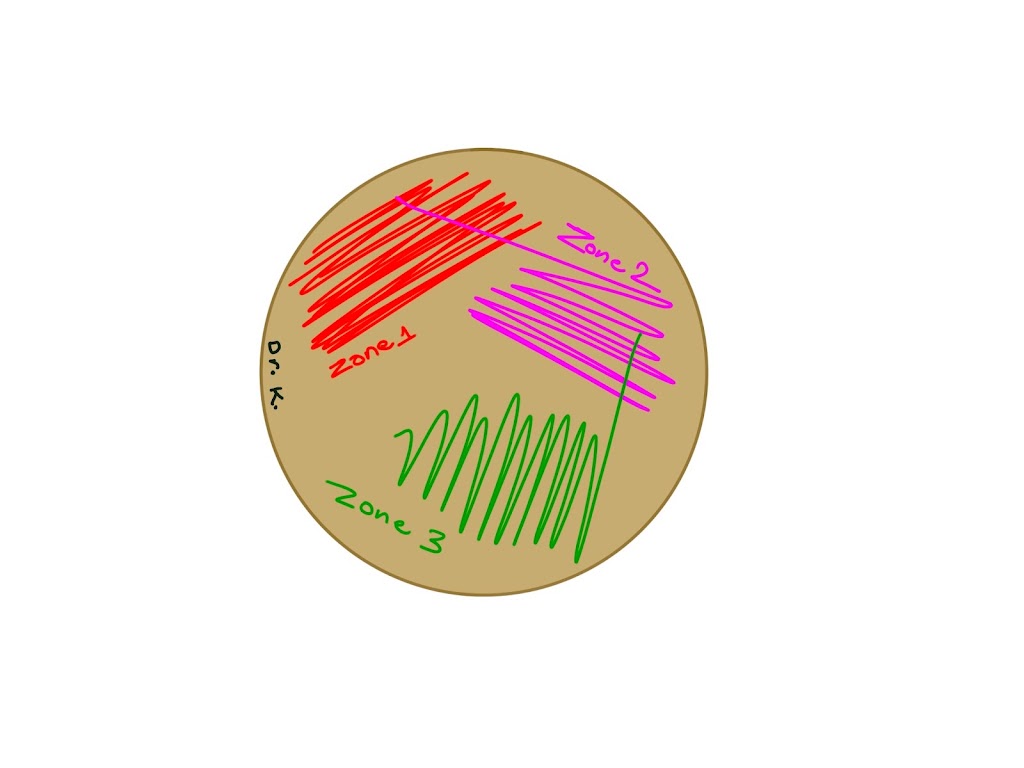 |
| 3-zone streaking pattern |
 |
| After incubation of 3-zone streaked plate |
The three-zone streaking method is a laboratory technique used to isolate and identify bacterial strains. It involves using a sterile inoculating loop to streak a culture of bacteria onto a Petri dish containing agar. The agar is a solid, nutrient-rich growth medium that allows the bacteria to multiply and form colonies.
The streaking process involves making three separate streaks on the Petri dish, each in a different area. The first streak is made in the center of the dish, the second streak is made in the middle section of the dish, and the third streak is made in the outer section of the dish.
As the bacteria grow, they form colonies on the agar. The colonies that form in the center of the dish are the most densely populated and are called the confluent zone. The colonies that form in the middle section of the dish are less densely populated and are called the intermediate zone. The colonies that form in the outer section of the dish are the least densely populated and are called the marginal zone.
The three-zone streaking method allows the bacteria to be isolated and identified based on the size and appearance of the colonies they form. For example, a large, circular colony with a smooth, shiny surface may indicate the presence of Staphylococcus aureus, while a small, circular colony with a rough, granular surface may indicate the presence of Escherichia coli.

